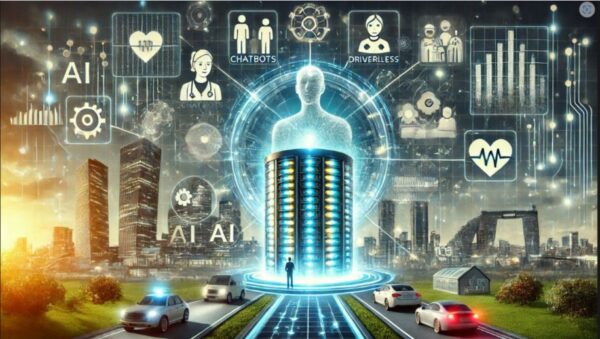As the year winds down, I’ve been thinking a lot about how quickly technology, especially artificial intelligence (AI), is changing the world around us. It’s remarkable to see how AI is already reshaping industries, solving problems thatAs the year winds down, I’ve been thinking a lot about how quickly technology, especially artificial intelligence (AI), is changing the world around us. It’s remarkable to see how AI is already reshaping industries, solving problems that once felt impossible, and making life simpler in so many ways. And in healthcare, this is just the beginning.
The Hidden Power Behind AI: Data
We hear so much about AI’s potential, but the real engine behind it is something simpler: data. Without high-quality, relevant data, even the smartest AI models can’t deliver. I’m reminded of my early days in statistics class, working with correlation models. Back then, everything depended on a fixed set of data and straightforward assumptions. Those models got the job done but were limited in what they could tell us about complex relationships.
Today, AI—especially tools like Large Language Models (LLMs)—can handle nuances in ways we couldn’t have imagined. These models don’t just look at fixed variables; they can analyze massive amounts of text, understand context, and adapt dynamically. But here’s the catch: they’re only as good as the data we feed them. If the data lacks depth or accuracy, so will the insights.
Why This Matters in Healthcare
What makes AI so exciting in healthcare is its ability to work hand-in-hand with new standards in data sharing, something we call interoperability. Together, these innovations are opening doors in areas like:
- Clinical Research: AI can comb through mountains of data to uncover patterns and insights faster than ever before.
- Diagnostics: It’s helping doctors piece together information from tests and suggest more personalized treatment plans.
- Administrative Efficiency: Today, healthcare is bogged down by paperwork. AI is lightening that load for patients and providers.
FHIR: The Backbone of Data Sharing
At the heart of all this progress is a tool called FHIR (Fast Healthcare Interoperability Resources). It might sound technical, but it’s simply a way to help healthcare systems talk to each other. Unlike older systems, FHIR is flexible, allowing us to adapt to new kinds of data. It’s what makes those patient-centric apps possible, giving people more control over their health information.
The next big leap in healthcare will come from combining AI with systems like FHIR to create a more connected, personalized experience. Take diabetes, for example. Managing it isn’t just about tracking A1c levels; it involves considering diet, exercise, mental health, stress, and risks for complications like heart disease. This requires a coordinated effort among endocrinologists, dietitians, cardiologists, mental health professionals, and other specialists.
Imagine an AI-powered system that pulls together data from electronic health records and real-life factors like where someone lives or how active they are. It could flag potential risks before they become problems and alert the right specialists to step in. Subtle changes in blood sugar levels, for example, could trigger early interventions that prevent serious complications.
Breaking Down Silos
One of the biggest challenges we still face is healthcare’s data silos. Right now, much of the information we collect gets stuck in separate systems, making it harder to get the full picture. Other industries, like banking, figured this out long ago. You can withdraw cash from any ATM, no matter the bank. Why can’t healthcare work the same way?
Thankfully, progress is happening. Efforts like the Trusted Exchange Framework and Common Agreement (TEFCA) are working to connect healthcare data nationwide. Companies like Epic are stepping up to standardize and share data, and now, patients can even sync their health records with apps of their choice. It’s a slow process, but the potential to improve care is enormous.
What This Means for Patients
At its core, AI is about uncovering insights from data … insights that can change lives. For people managing chronic conditions, this means more than just convenience; it means better outcomes. For example, AI could help:
- Identify patients at higher risk for complications and suggest targeted treatments.
- Fine-tune medication plans to reduce side effects and improve adherence.
- Provide care teams with actionable insights, enabling them to act faster and more effectively.
Standards like TEFCA are critical for making this work. They ensure data can move securely and in real time while protecting patient privacy through safeguards like encryption and role-based access.
____________
The combination of AI and interoperability is setting the stage for a healthcare system that’s not just more efficient but also more human-centered. By cutting down on administrative burdens and focusing on what really matters—caring for people—we’re finally catching up with other industries in how we use data to improve lives.
This transformation won’t happen overnight and it will require collaboration among policymakers, tech companies, healthcare providers, and patients. But the potential to create a smarter, more connected healthcare system is most certainly within reach. That’s what excites me most about the road ahead.

